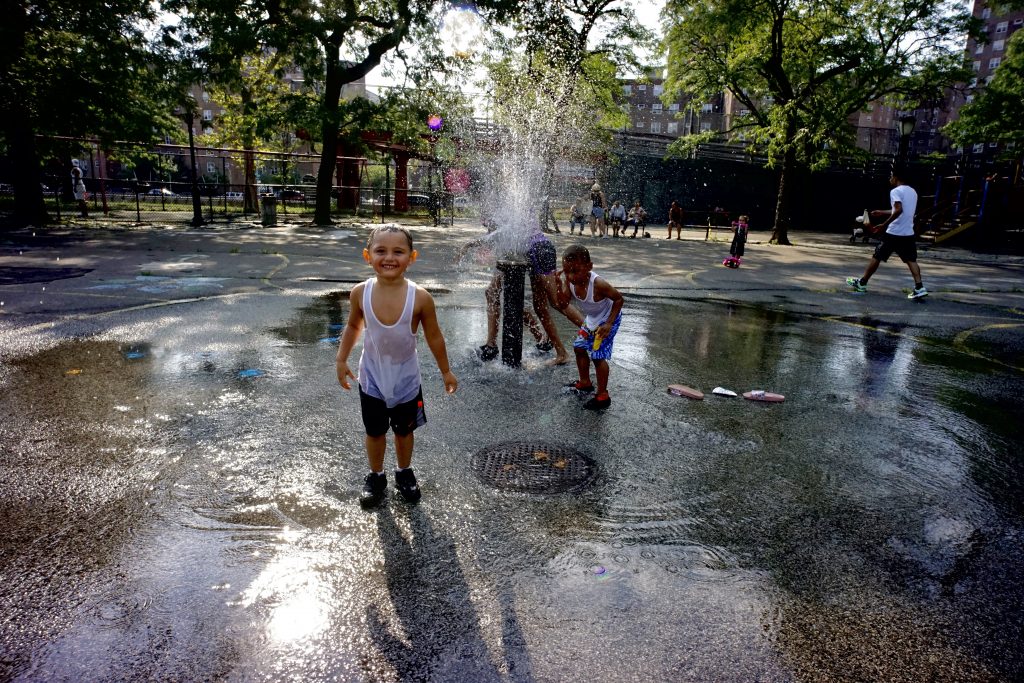The Independent: It was a bright Sunday afternoon in early August when Yvette Mercedes looked out over East River Park from the entrance at East Houston Street and FDR Drive.
Children scampered around a baseball diamond as a Little League game unfolded. On the far side of the field, cyclists and joggers moved up and down the esplanade that runs along the East River for most of the park’s length, from East 12th Street to just north of the Manhattan Bridge. Young couples lay on patches of grass, their limbs tangled together, while older couples sat on benches quietly watching the river’s churning waters. To the north, some of Mercedes’ working-class Lower East Side neighbors held sprawling family gatherings centered around the park’s barbeque pits.
“This is all we have,” Mercedes said. She has lived in the nearby Baruch Houses public-housing development for more than 30 years. “We don’t have the Hamptons. We don’t have summer homes. When we want to get away, we come here.”
That could soon change.
Seven years after Hurricane Sandy lifted up the ocean and inundated whole swaths of the city, including the Lower East Side, the de Blasio administration is racing to win approval for the East Side Coastal Resiliency Project, a $1.45 billion flood-mitigation plan that has sparked an outcry from some neighborhood residents.
The plan calls for closing the 58-acre park for three and a half years, burying it beneath eight to 10 feet of landfill, and building a new park on top of it. The entire barrier would run 2.2 miles, from Montgomery Street to East 25th Street.
The battle over that plan is more than a fight over the future of a little-known gem of a park. It raises questions about how other major coastal cities will respond to an escalating global climate crisis and to whose benefit; the legacy of housing segregation; the conflicting priorities of top-down city planning and neighborhood-based concerns; the values we assign private automobiles and mass transit; and the hollowed-out state of democracy in a New York where “the tale of two cities” persists.
The land that the East River Park sits on didn’t exist when Dutch colonizers arrived in the early 1600s. Much of what’s now the Lower East Side was a salt marsh, nourished by ocean waters that sloshed through twice a day with the ebb and flow of the tides. Hurricane Sandy marked the ocean’s emphatic return, as chest-high torrents of water poured down Avenues C and D and flooding extended as far inland as Third Avenue. The surging waters also knocked out a Con Edison substation at East 15th Street and FDR Drive, throwing almost all of Manhattan below 40th Street into a gloomy darkness.
No group in the Lower East Side suffered more than the approximately 28,000 residents of the New York City Housing Authority developments that line the west side of FDR Drive. The residents — including many seniors with no means to flee elsewhere — lost water and electricity for more than a week, and had to climb up and down pitch-black stairwells if they wanted to venture outside. Read more>>
“I saw that water come in,” Mercedes recalled. “I didn’t have light for over seven days.”
Sandy may have seemed like a once-in-a-century storm. But with carbon emissions and global temperatures both rising, it’s expected that New York will see more supercharged hurricanes, along with higher sea levels as the polar ice caps continue to melt. To that end, the city and the federal Department of Housing and Urban Development invited Lower East Side residents to help envision a flood-mitigation plan for the neighborhood. After four years of meetings, broad support emerged for building a landscaped eight-foot berm along the back of the park that would abut FDR Drive, with the hope of someday decking over the highway to expand the park. This plan would have provided much-needed protection for the neighborhood while preserving access to the esplanade and some of the park’s trees. It would have also required closing one of the FDR’s six lanes every night for five years.
